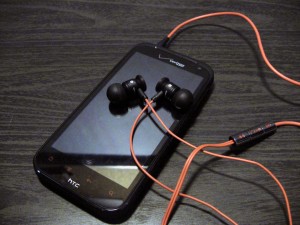
Turn your old smartphone into a standalone media player
Chances are you have an old Android (or other) smartphone laying around, collecting dust. Instead of tossing it or selling it for mere pennies, here’s an idea for breathing new life into an idle handset: turn it into a standalone media player. As a media player, the latest cutting-edge specs won’t matter (as much), making an older phone the perfect candidate for conversion. Here are a few tips and tricks for getting the most out of your new media machine.
Wipe phone of extraneous apps and perform a factory reset
When repurposing a smartphone, it’s best to start from scratch. Without a connection to a cellular network (and presumably owning a separate, functional smartphone that can handle your daily communications), you won’t need to worry so much about keeping your list of contacts or data-hungry apps that will now be rendered quite useless.
The easiest way to accomplish this is by performing a factory reset, a process that can be achieved on most Android phones by navigating to the settings menu and then to the “Backup & reset” dialog. Depending on your device the option might be found under the “Privacy” or “Storage” menus.
When entering your Google ID upon rebooting and initializing the phone setup, be sure to avoid syncing the new media player with your existing library of downloaded apps if presented with this option, or else you will be back at square one.
Install your favorite media apps
Your Android media player is a WiFi-only device with no cellular connection. Keep this in mind when choosing which media apps to install on the old phone. You will likely want at least one great streaming app such as Spotify of Pandora, but you will also want a good player for offline playback as well.
Google Play Music is a great choice for most, and cloud sync options allow for easy management of your music library. While you will still need WiFi to access your complete library of music, Play Music’s cloud storage can also help save previous internal storage space for your favorite tunes and videos.
Other options for offline playback include doubleTwist Player (which has accompanying PC software for easy management of your music library), PowerAmp, and WinAmp. For video, YouTube is a must for video streaming, while RockPlayer, MX Player, or VLC can make easy work of almost any video file type.
Load up the media
What’s a media player without, well, media? As mentioned before, Google Play Music offers an easy way to manage and sync music between a PC and your phone (with the also aforementioned doubleTwist another option). If your tight on storage space on your device, you will want to be a little more selective about what goes on the phone’s internal drive or microSD card. This is where the benefits of cloud music storage come into play.
If you are just starting to build out your music library, Amazon and Google Play offer a great selection of music at decent prices. Play often features holiday sales as well as a large selection of free tracks. Anything purchased through Play will be added to your account and retrievable on any associated device, and Amazon offers a similar service.
Accessorize
While the aim here is to create a cheap (free) media player using an existing phone, you can take the money you would save on buying a new iPod and put it toward a couple of accessories that could spruce up the experience. A quality pair of headphones, portable speakers, or extra microSD storage (if your old phone supports it) all make logical buys. You probably even have some of that stuff already, so put it to good use.
For those that plan on watching their fair share of video content, it might be worth looking into an external, WiFi-enabled hard drive. The Kingston Wi-Drive features easy compatibility via an Android app and starts at about $60 for 16GB. For those not afraid to spend a bit more for more storage, the Seagate GoFlex Satellite offers 500GB of storage for about $200.
Experience your media
Now that we have everything squared away, it’s time to put your new media player to good use. Plug in some headphones, connect to your car stereo, link up with a set of portable speakers. All of your music and video will be at your fingertips, and you won’t have to worry about those files taking up space on your actual smartphone. Depending on what you’re working with, you might even toss a few games on there. Voila, the ultimate travel companion.